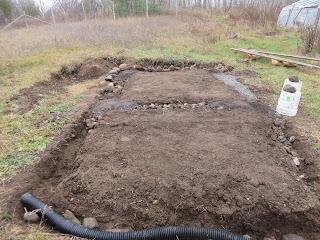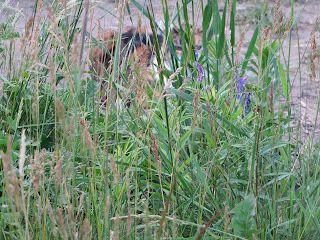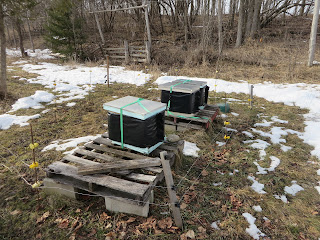Update as of December 9th:
We still have produce in stock for sale. For our CSA and occasional customers in Kanata, Stittsville, and Ottawa, I will be making deliveries once during the weeks of the 13th, 20th, and 27th.
Exact dates to be determined by the weather, I try to keep my best eather days for work here at the farm.
For custoemrme in the Lanark and McDonalds Corners area, please contact us by phone or email (prefferrred) to order and arrange a pick up time.
For honey or pork, please see the honey and pork pages respectively. For other produce, check the Farmgate Store page.
Supplies for most of our produce stock, and certain cuts of pork are limited, so contact us soon.
Our jars of award winning gold honey make great Christmas gifts!
Withthe pork to arrive soon, activity continues to ramp up here at Whitsend. Even as the first snow flies, there are tasks to be seen to. No time for winter reading just yet.
There are still carrots, rutabaga, garlic, and limited quantities of potatoes remaining to be sold. Contact us if you are interested.
Our pork is arriving tommorrow. As is our new freezer. And the worst weather of the new season.
For details, see the 'Pork' page at the tab above.
I'm sure my pork pick-up trip will be a bit of an adventure on the roads tommorrow.

The barn has a lot of assorted stuff still in it, all slowly being packed while a new shed is hastily constructed at the Lanark site to put it all in.
Our field for the past ten years has finally begun to yield some very good results. The last and probably biggest lesson I learned in deveping soil fertility was cover cropping, especially at the end of the year to provide for the next season's soil.

This photo is taken of the earliest portion of the field that I grew vegetables on. I have not used it for over three years, yet the outlines of the beds are still discernable.
The farm is now sold so everything must be out by January First. Good bye first farm...
The new farm had some progress this season. Our first vegetable field has had it's cover crops rotated for two years and now the new beds are being cut in.
This is the next vegetable field to start work on after its first plowing. I have started it now as I expect there will be at least one year of cover cropping. While the cover crops break up the hard crust, smother weeds and feed the soil, I'll be cleaning and preparing beds in the first field.
PS - Word from B.C. is that our two main seed garlic suppliers are ok. At last word, one was without pawer and operating on generators and the other was on high enough ground to be out of the flood zone. No doubt they still have their challenges.
It is very unfortunate that there will be a lot of soil remediation to be done. One farmer I heard from remarked that after the water receded from their field, it left a scent of kerosene all over their land. I wonder about the ecological and organic farms that have had their nieghbours herbicides such as round up wash over their soil. This mess will be a long clean up.
A drained lake is not land!

























































